無定形碳板 Amorphous Carbon Plate

日本輕金属株式會社以其在碳材質製程、研磨/抛光以及表面改質(surface modification)的多年經驗,開發出了嶄新的無定形碳板(amorphous carbon plate)
東京未來式已與日本輕金属株式會社合作於海內外市場共同銷售推廣無定形碳板(amorphous carbon plate)。
請點此進入日本輕金属株式會社官網。
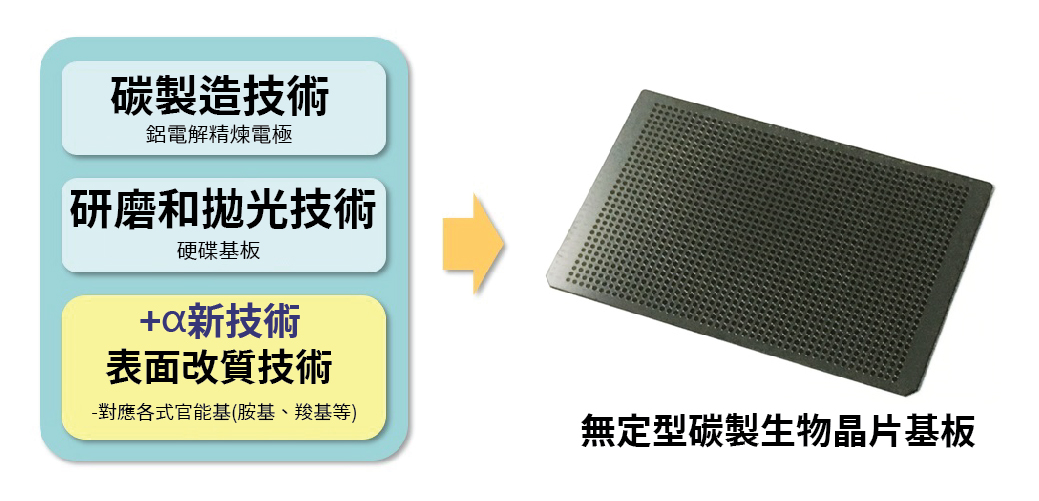
不同材質的物理性質比較表
| 無定形碳 | 玻璃 | 塑膠(聚苯乙烯) | 鋁 | |
| 密度 103kg/m3 | 1.42~1.55 | 2.5 | 1.04~1.09 | 2.7 |
| 抗彎強度 MPa | 150~260 | 54.9 | 69~101 | 205 |
| 抗壓強度 MPa | 480 | 900 | 82~89 | – |
| 楊格模數 GPa | 23~35 | 71.6 | 3~3.5 | 69 |
| 熱膨脹係數 10-6/K | 2.1~3.7 | 8.5~9.0 | 50~83 | 23 |
| 熱傳導率 W/m·K | 5.8~7 | 1 | 0.126 | 237 |
| 電阻率 Ωm | 40~45 x 10-6 |
1010~1014 | >1018 | 2.82 x 10-8 |
應用實例
Fukuda, E. et al. “Development of INSOL-tag for proteome-wide protein handling and its application in protein array analysis”, Genes Cells. 2019: 1-13
特色① 極高敏感度
| 較低的自體熒光 | 較少蛋白質的非特異性結合 |
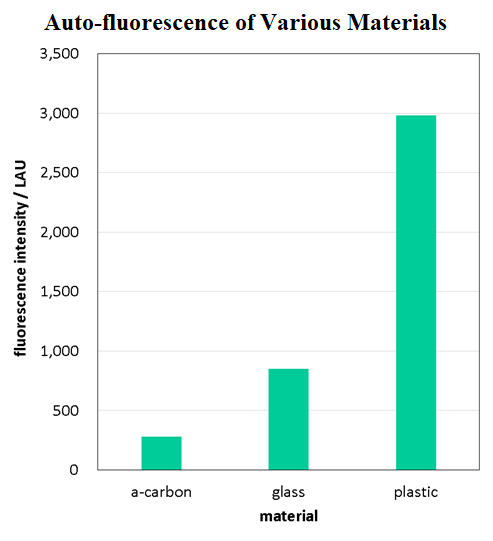 |
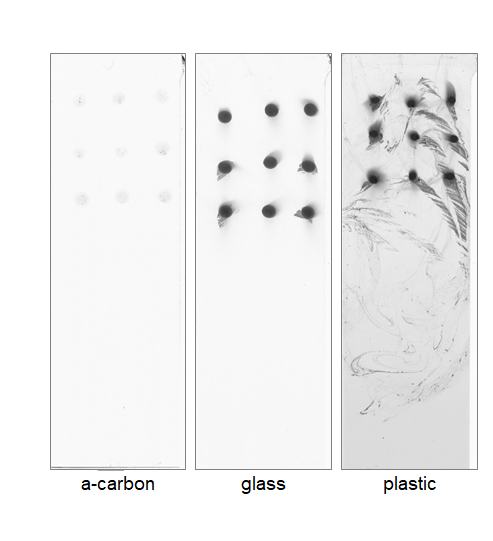 |
特色② 使用簡便
無定形碳板不僅重量輕便而且非常耐用。
官能基(如胺基 / 羧基)因為是以共價鍵修飾在碳板上,不會輕易的被沖洗掉或被化學反應移除。

特色③ 產品客製化自由度高
不僅是官能基的類型、模式、數量,更進一步到碳板的大小、厚度等等都是可以依要求進行客製化。
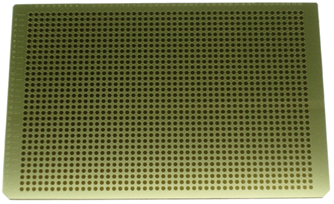
(例) 1536 多孔修飾
此不定形碳板亦可為各種不同的表面改質(surface modification)需求進行客製化,如1536多孔修飾或是全面板修飾。
若您有希望嘗試的設計,請與我們聯絡以獲取更多詳細介紹。
特色④ 可回收使用─較低的長期使用成本
只需經過重新抛光以及表面改質(surface modification)就可重複使用,大幅的降低長期下來的使用成本。
應用範例
使用碳板製作的人體蛋白晶片檢測血清檢體內的自體抗體
(Serum Autoantibody Detection by Human Protein Array Using Carbon Plate)
實驗流程
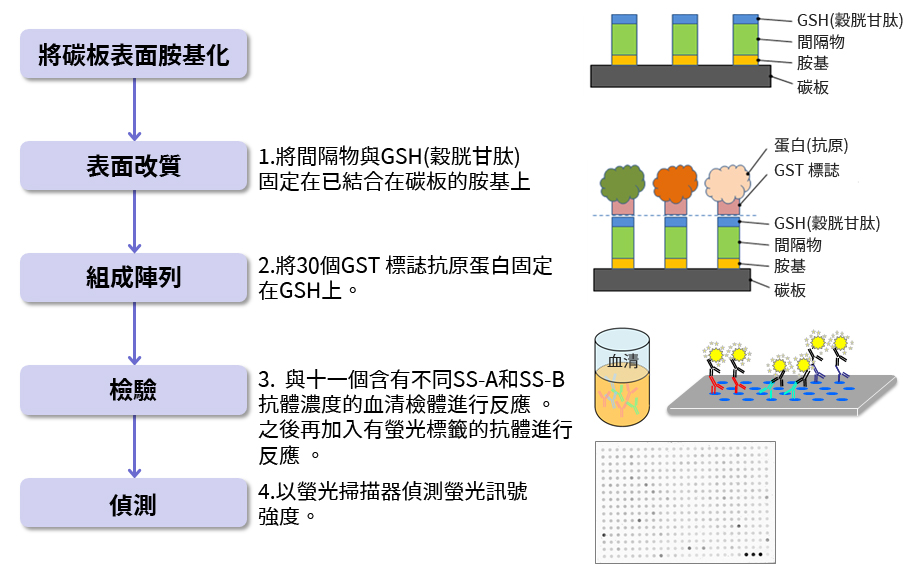
比較實驗
分析比較市售的SS-A和SS-B抗體ELISA,
與不定形碳板(amorphous carbon plates)的實驗結果。
實驗結果
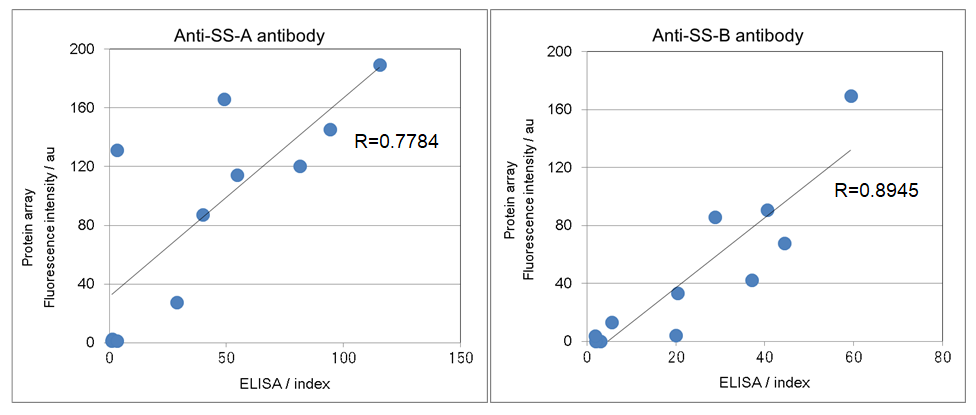
結果表明,使用不定形碳板建構的檢測系統在靈敏度方面表現與ELISA相同或更好。
另外, 不定形碳板建構的檢測系統可同時檢測多種抗體,這是其他測定方式較難做到的一點。
Amorphous Carbon Plate

Nippon Light Metal Company, Ltd. has developed a new amorphous carbon plate utilizing their expertise in carbon material production, grinding/polishing technology, and surface modification technology.
We have partnered with Nippon Light Metal Company to sell these amorphous carbon plates in Japan and also worldwide since 2019.
Please click here to visit Nippon Light Metal Company’s website.
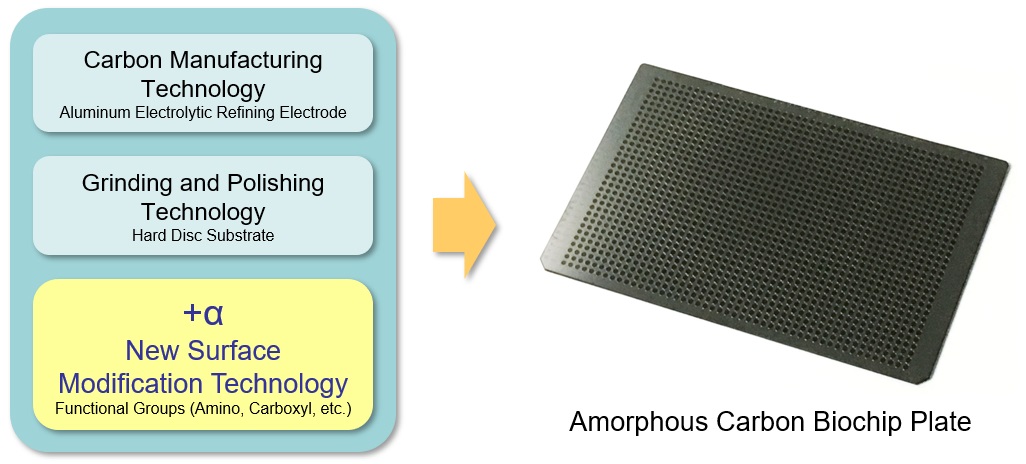
Physical Property Comparison
| Amorphous Carbon | Glass | Plastic(polystyrene) | Aluminum | |
| Density 103kg/m3 | 1.42~1.55 | 2.5 | 1.04~1.09 | 2.7 |
| Bending Strength MPa | 150~260 | 54.9 | 69~101 | 205 |
| Compressive Strength MPa | 480 | 900 | 82~89 | – |
| Young’s Modulus GPa | 23~35 | 71.6 | 3~3.5 | 69 |
| Thermal Expansion Coefficient 10-6/K | 2.1~3.7 | 8.5~9.0 | 50~83 | 23 |
| Thermal Conductivity W/m·K | 5.8~7 | 1 | 0.126 | 237 |
| Electrical Resistivity Ωm | 40~45 x 10-6 |
1010~1014 | >1018 | 2.82 x 10-8 |
Paper References
Fukuda, E. et al. “Development of INSOL-tag for proteome-wide protein handling and its application in protein array analysis”, Genes Cells. 2019: 1-13
Feature① High Sensitivity
| Low Auto-fluorescence | Less Non-specific Adsorption of Proteins |
 |
 |
Feature② Ease of Use
Amorphous carbon plates are light-weight and very durable.
Functional groups such as amino / carboxyl are covalently bonded to the surface of plate.
Therefore it is hard to remove by washing or chemical reactions.

Feature③ Highly Customizable
The type of functional group, pattern, amount as well as the plate’s shape, size, thickness are all customizable.

(Example) 1536 spot pattern
The amorphous carbon plate can be customized to various different designs of surface modifications such as a 1536 spot pattern or a full surface modification.
If there is a design you are interested in, please contact us for more details.
Feature④ Recyclable – Low Long-term Cost
The plates are reusable after re-polishing and surface modification, greatly reducing the long-term cost of the plates over time.
Application Example
Serum Autoantibody Detection by Human Protein Array Using Carbon Plate
Experiment Flow
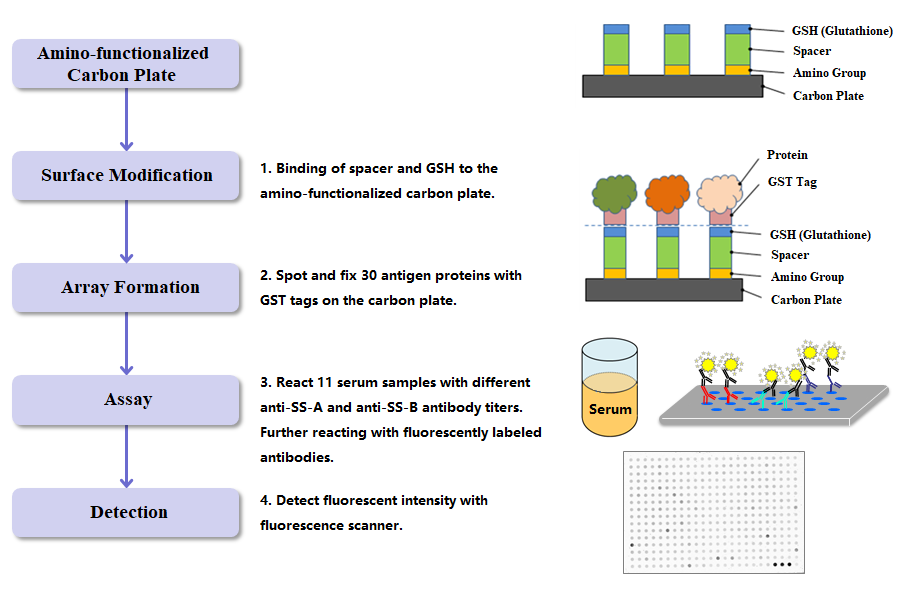
Comparison Study
Assays are performed with commercially available SS-A and SS-B antibody ELISA,
and results were compared to that of amorphous carbon plates.
Results

The results suggest that the detection system built with the amorphous carbon plates performs equally or better than ELISA in terms of sensitivity.
Additionally, the amorphous carbon plate system would allow for the detection of multiple antibodies at the same time, something that other assays cannot achieve.
アモルファスカーボン製基板

日本軽金属株式会社は、同社独自のカーボン製品技術、研削・研磨技術および表層修飾技術を用いることにより、アモルファスカーボン製バイオチップ基板を開発致しました。
東京未来スタイルは、このバイオチップ基板を国内市場および海外市場に向けて販売を開始致しました。
日本軽金属株式会社のウェブサイトはこちら。
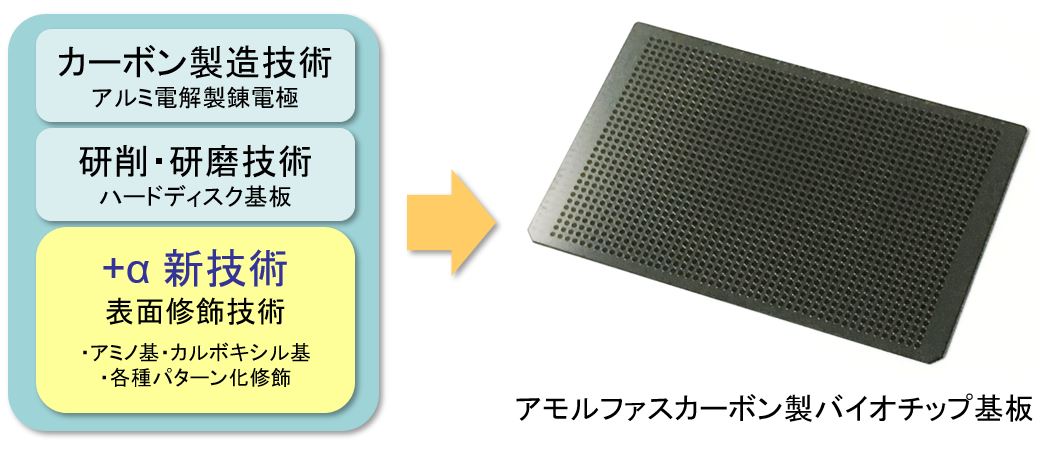
各素材の物性
| アモルファスカーボン | ガラス | 樹脂(ポリスチレン) | アルミニウム | |
| 比重 103kg/m3 | 1.42~1.55 | 2.5 | 1.04~1.09 | 2.7 |
| 曲げ強度 MPa | 150~260 | 54.9 | 69~101 | 205 |
| 圧縮強度 MPa | 480 | 900 | 82~89 | – |
| ヤング率 GPa | 23~35 | 71.6 | 3~3.5 | 69 |
| 熱膨張係数 10-6/K | 2.1~3.7 | 8.5~9.0 | 50~83 | 23 |
| 熱伝導率 W/m·K | 5.8~7 | 1 | 0.126 | 237 |
| 電気抵抗率 Ωm | 40~45 x 10-6 |
1010~1014 | >1018 | 2.82 x 10-8 |
参考文献
Fukuda, E. et al. “Development of INSOL-tag for proteome-wide protein handling and its application in protein array analysis”, Genes Cells. 2019: 1-13
ポイント① 高感度に検出できる
| 自家蛍光が小さい | タンパク質の非特異吸着が少ない |
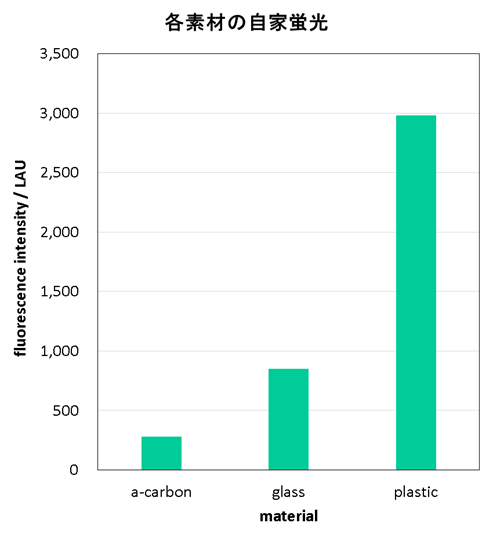 |
 |
ポイント② 使い勝手の良さ
-アミノ基等の官能基を共有結合で固定しているため洗浄や化学反応で剥がれにくい
-軽量で割れにくい

ポイント③ カスタマイズ可能
官能基の種類,パターン,量および基板の形状,大きさ,厚さなど、御要望に合わせてカスタマイズ致します。

例) 1536スポット アミノ基修飾基板
例えば、マイクロプレートのウェルの大きさやピッチに合わせたピッチ96スポット,1536スポットや全面修飾など、
好みのパターンが可能です。
ポイント④ ライフサイクルコスト
再研磨・再表面修飾による再利用が可能なので、ライフサイクルコストを低減できます。
使用例: カーボン製基板を用いたヒトタンパク質アレイによる血中抗体検出
試験方法
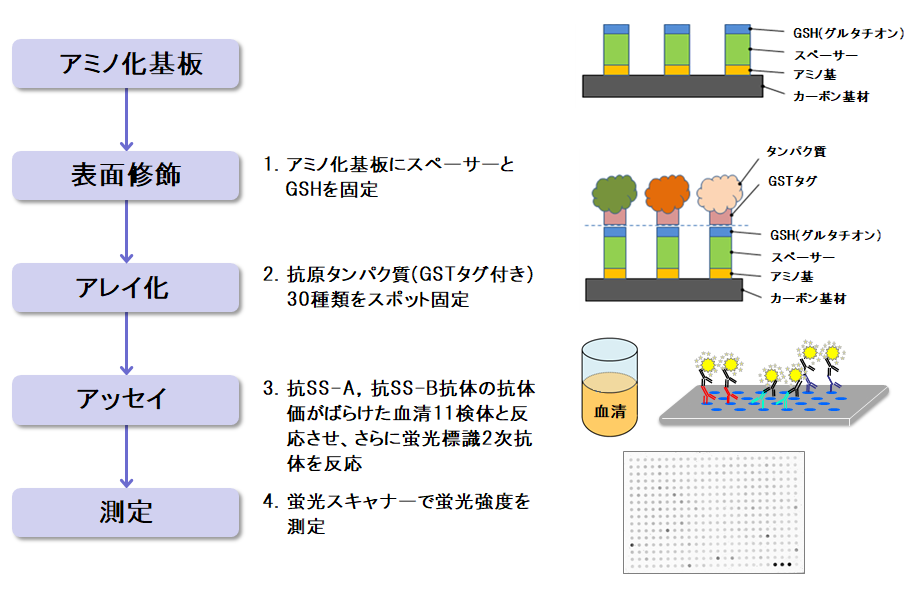
対照試験
市販の抗SS-A抗体,抗SS-B抗体診断薬(ELISA)を使用した。
プロテインアレイと同じ血清検体を各診断薬の検査方法に従って測定した。
試験結果
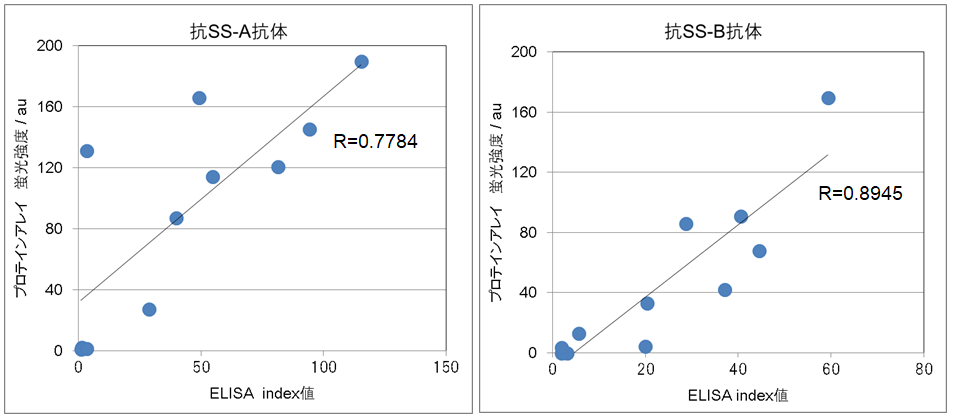
ELISA法と同等以上の感度で、相関性のある定量的な測定が可能であった。
診断薬(1種類の抗体対象)では検査対象外の自己抗体も複数同時に検出できた。
各商品の価格のお問合せ、商品仕様書のご依頼、その他のお問い合わせは下記までお願いします。
【商品取扱元】株式会社 東京未来スタイル
info@tokyofuturestyle.com
TEL:029-851-9222 FAX:029-851-9220
Warning: Undefined array key "HTTP_REFERER" in /var/www/vhosts/fsfield.net/subdomains/tokyofuturestyle/tokyofuturestyle.fsfield.net/httpdocs/wp-content/themes/Tokyo Future Style/single.php on line 255

